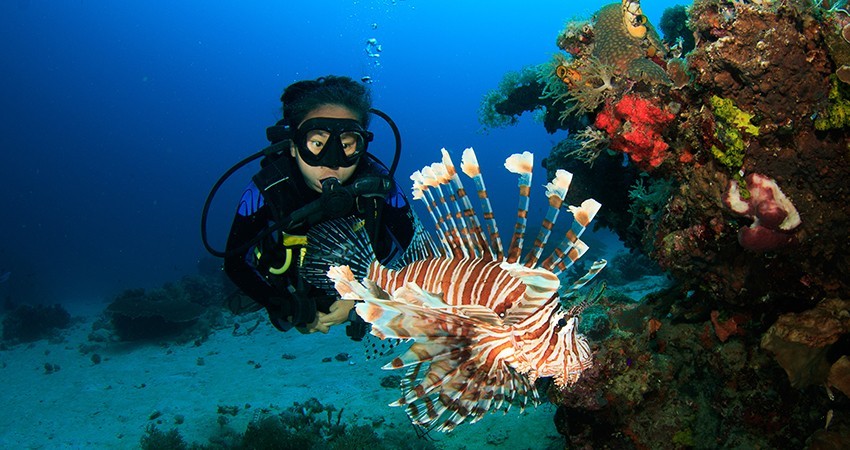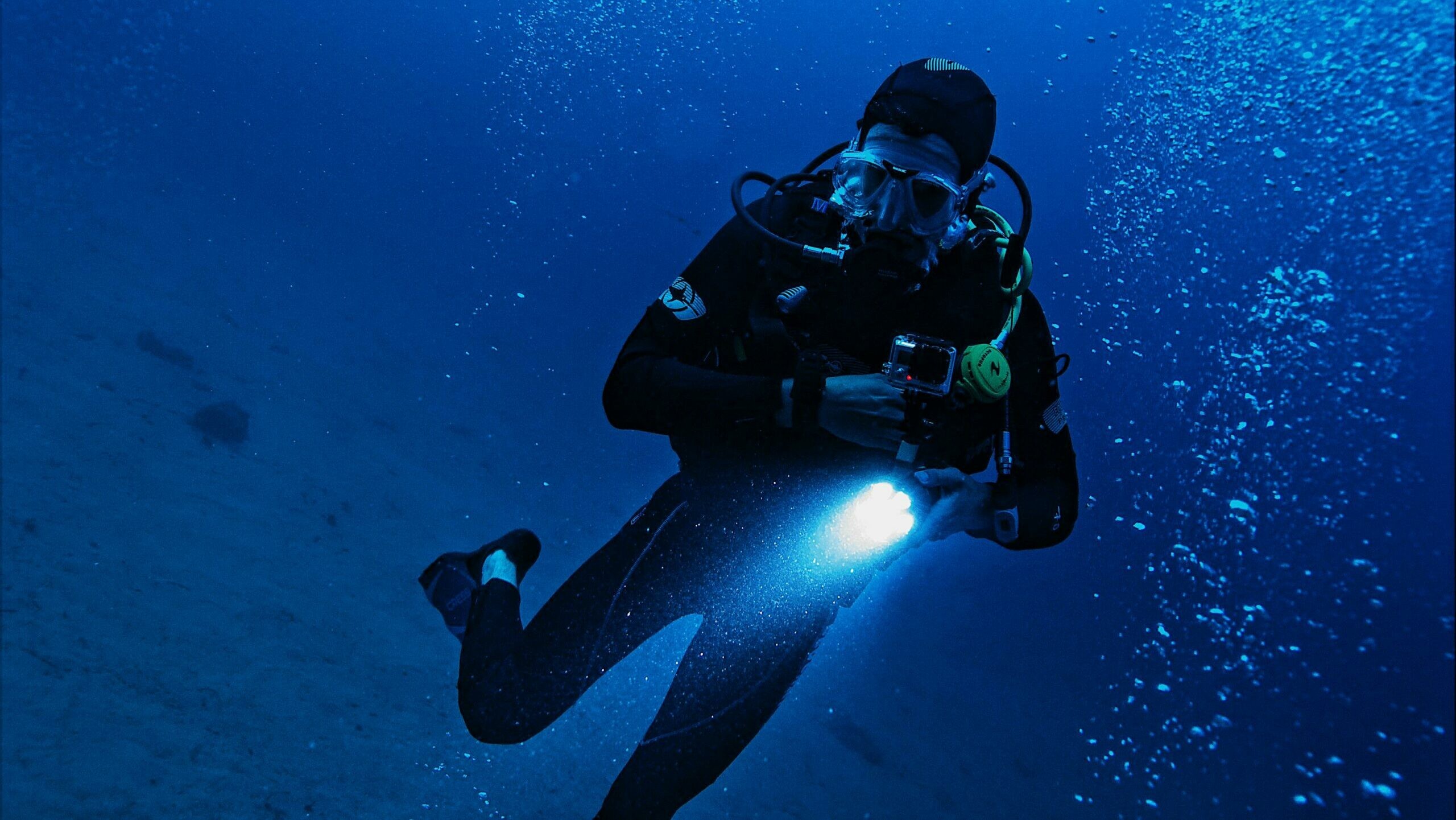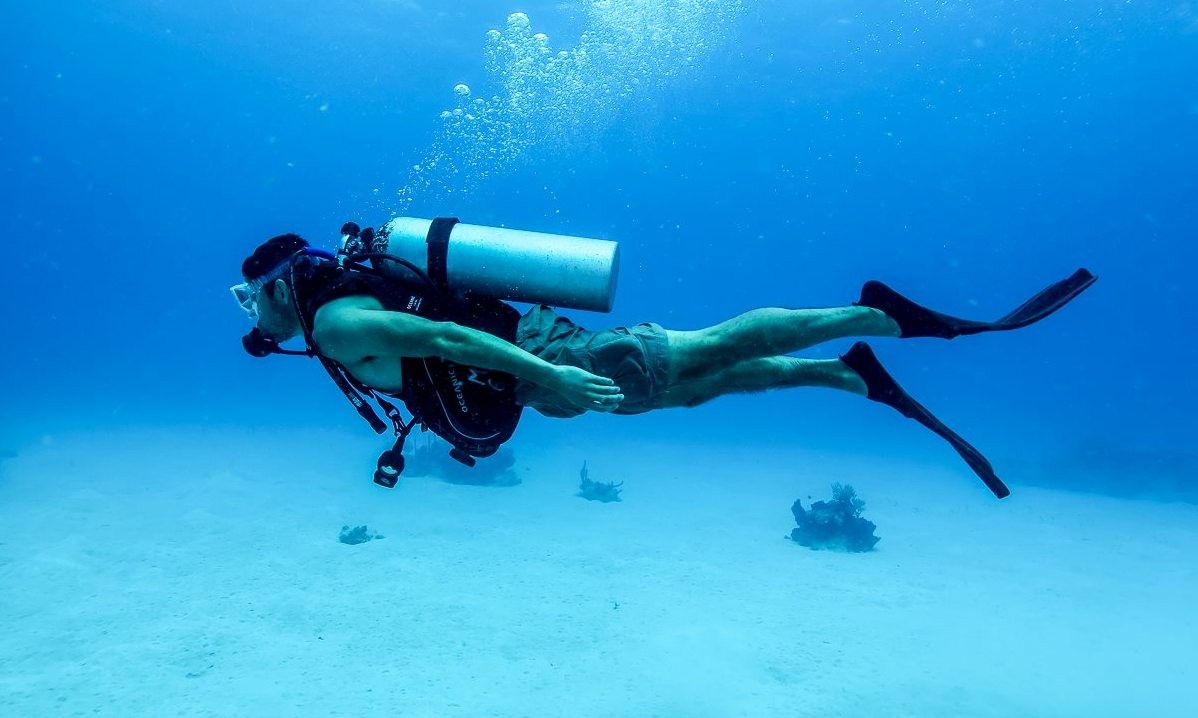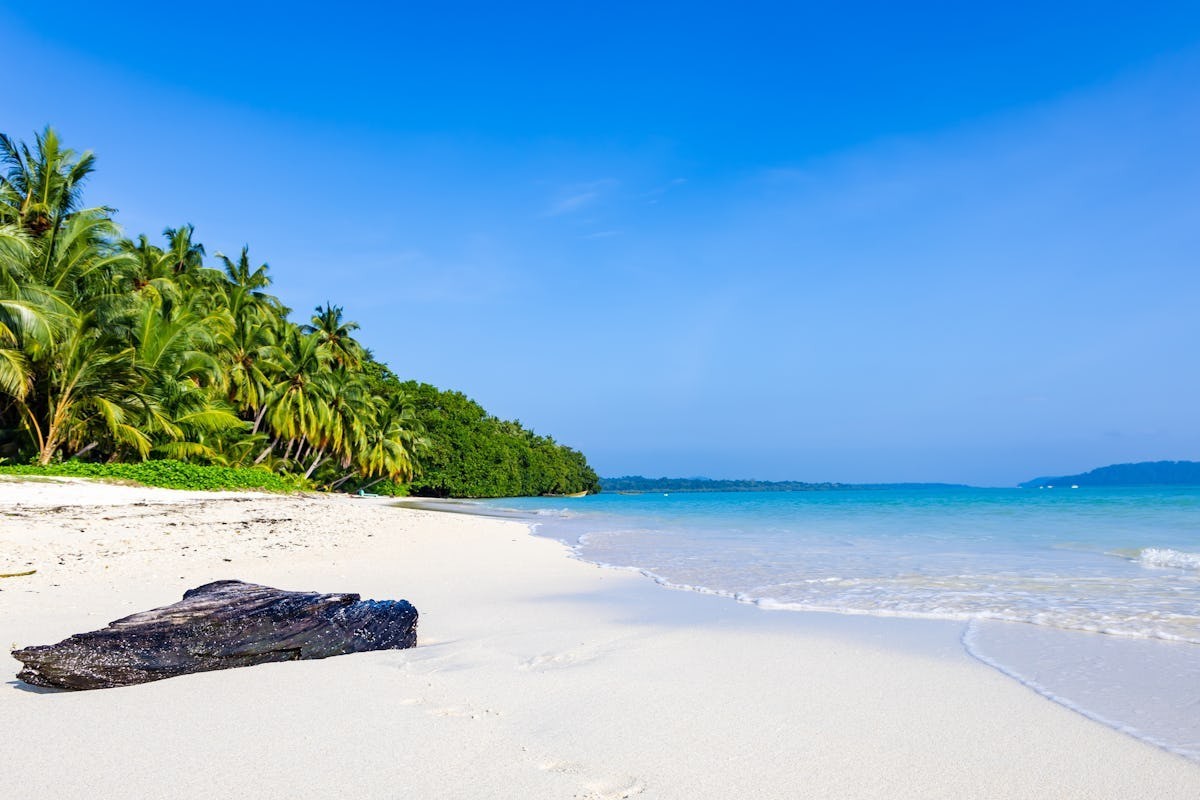Diving Sites in Port Blair



.jpg)
-
Jun 07, 2023
Nestled in the azure waters of the Bay of Bengal, Havelock Island, also known as Swaraj Dweep, is a mesmerizing tropical haven that enchants visitors with its pristine beaches, lush greenery, and vibrant marine life. With its tranquil ambiance, breathtaking landscapes, and friendly locals, Havelock Island offers an idyllic getaway for those seeking solace and adventure alike. Today, we venture on a journey to explore about Havelock Island, from its stunning beaches to its fascinating underwater world.
About Havelock Island: The Beaches
Radhanagar Beach : If there's one beach that stands out in Havelock Island, it's Radhanagar Beach. Known for its powdery white sands, crystal-clear waters, and stunning sunsets, Radhanagar Beach has consistently been ranked among the world's best beaches. The serene atmosphere and the lush forest backdrop create an ethereal setting, making it the perfect spot for relaxation and rejuvenation.
Vijaynagar Beach : Tucked away from the bustling tourist spots, Vijaynagar Beach offers a tranquil escape. Its long stretch of golden sand, fringed by swaying palm trees, provides a serene setting for beach walks and sunbathing. The calm waters make it ideal for swimming and snorkeling, allowing visitors to explore the vibrant marine life that resides just beneath the surface.
About Havelock Island: Underwater Delights
Snorkeling : Havelock Island is a snorkeler's paradise, offering an opportunity to witness the mesmerizing marine life firsthand. With its clear waters and thriving coral reefs, the island is home to an abundance of colorful fish, fascinating coral formations, and even sea turtles. Snorkeling excursions are readily available, allowing visitors to dive into the magical world beneath the waves and create memories that last a lifetime.
Scuba Diving : For those seeking a more immersive experience, scuba diving in Havelock Island is a must. The island boasts several diving sites catering to both beginners and experienced divers. Exploring the vibrant underwater landscape, encountering majestic manta rays, and witnessing the untouched beauty of the coral reefs are just a few of the highlights awaiting divers in this underwater wonderland.
About Havelock Island: Nature's Treasures
The Enchanting Elephanta Beach : Accessible by boat, Elephanta Beach is a hidden gem waiting to be discovered. Known for its rich marine life and pristine coral reefs, this secluded beach offers a unique blend of adventure and tranquility. Take a leisurely stroll along the shore, snorkel amidst colorful fish, or simply bask in the sun while embracing the untouched beauty of nature.
The Majestic Kaala Pathar Beach : Kaala Pathar Beach, with its unique black rocks, offers a stark contrast to the white sand beaches of Havelock Island. This beach is perfect for a peaceful escape, away from the crowds, where you can relish in the tranquil ambiance and enjoy uninterrupted moments of solitude. Watch the waves crash against the rocks, immerse yourself in the scenic vistas, and let the soothing sounds of nature rejuvenate your soul.
About Havelock Island: Experiencing Local Culture
Interacting with the Locals : Havelock Island is not just about its natural beauty; it is also about its warm and welcoming locals. Engaging with the islanders offers a glimpse into their unique way of life. From tasting traditional delicacies to participating in cultural events, embracing the local culture adds an enriching dimension to your visit.
Sustainable Tourism Efforts : The residents of Havelock Island are committed to preserving the natural treasures of their home. The emphasis on sustainable tourism practices, such as beach cleanups, waste management initiatives, and conservation efforts, ensures that future generations can continue to enjoy the island's pristine beauty. Supporting these initiatives through responsible tourism can contribute to the long-term preservation of this paradise.
About Havelock Island: Thrilling Water Sports
Kayaking : Exploring the turquoise waters of Havelock Island by kayak is an exhilarating experience. Rent a kayak and navigate through the mangrove forests, hidden coves, and secluded lagoons. As you paddle along, keep an eye out for colorful birds and marine life that call these mangroves their home. It's a fantastic way to get up close and personal with the island's natural wonders.
Jet Skiing and Banana Boat Rides : For those seeking a bit of adrenaline-pumping action, jet skiing and banana boat rides are popular water sports activities in Havelock Island. Hop on a jet ski and zoom across the sparkling waters, feeling the cool breeze on your face. Alternatively, enjoy a thrilling ride on a banana boat as it bounces over the waves, splashing you with excitement and laughter.
About Havelock Island: Exploring the Island's Trails
Trekking to Elephant Beach : Embark on a scenic trek to Elephant Beach, immersing yourself in the island's lush greenery. The trail winds through dense forests, offering glimpses of exotic flora and fauna along the way. Reach the pristine Elephant Beach, where you can unwind, snorkel, or simply marvel at the beauty of nature surrounding you.
Nature Walks in the Forest : Take leisurely nature walks in the island's forests to discover its hidden treasures. The vibrant foliage, chirping birds, and the gentle rustle of leaves create a serene atmosphere that rejuvenates the soul. Keep your eyes peeled for unique plant species and encounter the occasional wildlife, such as colorful butterflies and friendly squirrels.
About Havelock Island: Indulging in Culinary Delights
Fresh Seafood Galore : Being an island paradise, Havelock offers a delightful array of fresh seafood. Visit the local restaurants and beach shacks to savor the catch of the day, from succulent prawns to flavorful fish curries. Indulge in the authentic flavors of the region and let your taste buds revel in the gastronomic delights.
Tropical Fruits and Refreshing Drinks :The island's tropical climate gives rise to an abundance of delicious fruits. Treat yourself to juicy pineapples, ripe mangoes, and refreshing coconuts, freshly plucked from the trees. Quench your thirst with local fruit juices and coconut water, perfectly complementing the tropical ambiance.
Conclusion:
Knowing about Havelock Island, or Swaraj Dweep an enchanting destination that offers a myriad of experiences for travelers seeking both relaxation and adventure is thrilling. From its breathtaking beaches and vibrant marine life to its exciting water sports and captivating trails, the island has something to suit every taste. Immerse yourself in the warm hospitality of the locals, indulge in the culinary delights, and let the natural beauty of Havelock Island leave an indelible mark on your heart. So, pack your bags, launch on this memorable journey, and uncover the paradise that is Havelock Island.
Diving Sites in Port Blair
Diving Sites in Havelock Island
Diving Sites in Neil Island

.jpg)


